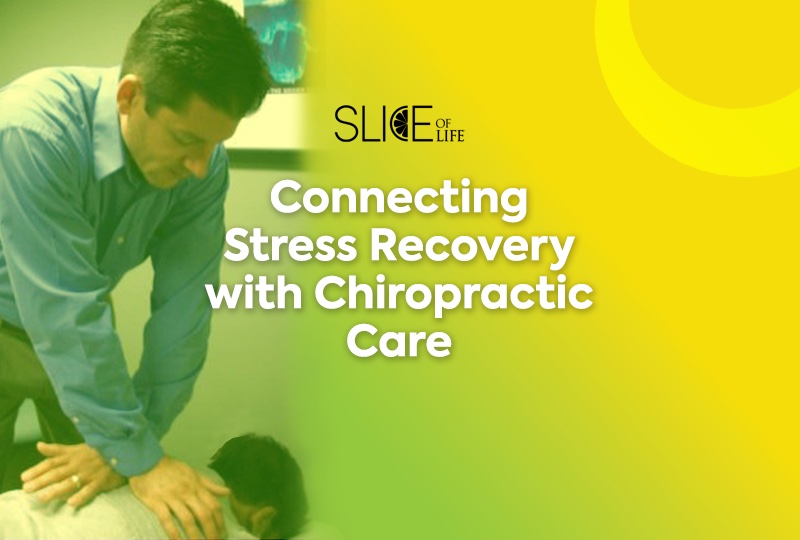Stress is an incredible physiological response to stimuli that can cause major changes to our health. Physical pain and emotional pain are inextricably linked. The Foundation for Chiropractic Progress (F4CP) lays this out in their article “6 Tips to Target Stress Recovery”.
It’s not uncommon for chronic pain sufferers to also have underlying issues related to hormonal stress that manifest into symptoms, such as low energy or depressed moods. Mental stress can also affect a person’s ability to cope with physical pain. Over 16 million Americans report persistent and chronic back pain limiting their ability to perform work and life activities. Individuals with chronic back pain also notice meaningful levels of psychological stress related to hopelessness, anger, depression and more.
Recent studies continue to support the idea that lower back pain and depression often are symbiotic and not necessarily isolated health conditions. Haywire hormones deregulated by physical or mental stress can create interferences for a number of bodily functions, such as immunity, inflammatory responses, protection of cells, rebuilding of tissues, blood sugar stability, nerve conduction, central nervous system operation and the blood-brain-barrier. Besides the pain and healing implications, hormone imbalances can disrupt mood, sleep and libido, as well as cause irritability, aggression and energy dips.
Hormonal dysregulation can surprisingly affect the way that medications like antidepressants, pain meds and neuropathic agents work in the body. Unfortunately, underlying hormone imbalance can prevent prescription drugs from reaching the desired therapeutic response. Therefore, finding natural, drug-free solutions to break the cycle of stress, pain and mood swings is essential.
Intentional Stress Management Tools
When talking about how to regulate stress and avoid cycles of pain and stress, the goal is to properly manage the hypothalamic-pituitary-adrenal-thyroid-gonadal (HPATG) system known as the body’s main stress control center. Doctors of Chiropractic (DCs) understand the complex role that stress plays, how it effects the body, and the need to reduce mental and physical stressors fatiguing the HPATG Axis. Removing stressors when possible and giving support for the axis to heal is crucial. But how do we address stress?
- Acknowledge Your Emotions
Ask yourself honestly how you are feeling and from where those feelings may stem. Support groups, therapy or other professional assistance can help you pinpoint your emotional state and better articulate personal mood changes or pain. Mindfulness meditation, quiet reflection, prayer and other reflective self-care activities can also be beneficial. Don’t be afraid to say ‘no’ to optional stressful activities that don’t bring you joy. Instead, seek activities that foster peace and renewed energy within you.
- Be Proactive in Pain Management
Regularly being adjusted or evaluated by a chiropractor can help immensely in maximizing joint function and keeping pain levels low. Your chiropractor can monitor your problem areas over time, adjust as needed, offer tailored strengthening regimens and work with you on improved stability and natural pain relief.
- Be Aware of Toxins
Garbage in, garbage out. Simply put, if you put unhealthy food, drinks and chemicals into your body, you will likely experience adverse effects over time. Ideally, you should try to reduce the amount of toxins you consume or allow yourself exposure to. Stimulants like coffee, caffeine and soda put strain on the adrenal glands. Alcohol is a depressant and best limited, as it taxes the organs as the body processes it. Sugar, white flour, fried or processed foods with chemicals, and artificial sweeteners are best avoided or limited. Don’t forget to examine personal products like shampoos and lotion, opting for natural products to decrease the toxic load on the body, letting the body focus energy toward rebalancing itself.
- Nutrition is Your Friend
Eat food for nourishment, not for emotional reasons. Shop the perimeter of the grocery store, where you will find more whole food choices as opposed to processed foods. Strike a balance of lean proteins and fresh healthy produce. Remember to drink plenty of water, and for a boost of vitamin C and flavor, you can add citrus.
- Work on Getting Enough Sleep
Make sure you give your body enough time to rest, as it is a time to rejuvenate and recover. Prolonged period of mental or physical stress will naturally tire you out. Sleep needs to be a healing priority.
Drug-free pain management is possible and at your fingertips. Connect with a Life University educated chiropractor and start step one to a healthier and happier you!
References (from original F4CP article)
1 https://hpi.georgetown.edu/backpain/
2 https://pubmed.ncbi.nlm.nih.gov/36901226/
3 https://www.ncbi.nlm.nih.gov/pmc/articles/PMC4107914/
4 https://www.f4cp.org/wp-content/uploads/2023/08/F4CP-Harris-Poll-2023_report-FINAL.docx.pdf
*Membership required to view this link.


Social Media